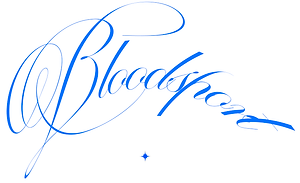.png)

presented by Refusés, supported by brave Projects
‘In this country, you gotta make the money first. Then when you get the money, you
get the power. Then when you get the power, then you get the women.’ Tony
Montana, Scarface (1983).
Forty years from its release, one might assume that it is the tale of money and power in the
glitz of 80s Miami that has turned Brian de Palma’s film into cult classic. After all, it is the
story of Tony Montana, a Cuban immigrant whose ruthless ascent and violent demise
represent the destructive undercurrents of the American dream. Yet, what continues to
fascinate audiences to this day is not the story itself, but the film’s gore, stylised violence and
macho dialogues. This spectacle of excess is inseparable from the object that defines it: the
hand gun, adorned as an extension of the character’s wealth, power, position, and
masculinity. Scarface was chosen alongside seven other action movies of the late 20th century
by Samah in Bloodsport, presented by Refusés at Galleria Objets. Pulp Fiction, Kill Bill I & II,
Miami Vice, Tomb Raider and Jackie Brown are only recognisable by their most iconic visual
motif, the hand gun.
Samah’s practice investigates how the signs and symbols of a capitalist system impact our
collective consciousness. By mimicking and distorting these signs, Samah reveals their dual
role: one that simultaneously glorifies and trivialises through repeated visual association.
Samah adopts Roland Barthes’s definition of the sign, as developed in Mythologies (1957). In
the first order, the gun is the signifier (the cultural object), and the signifier is its function, to
fire bullets. In the second-order system, however, the gun no longer serves its function but
exists as the embodiment of ideological meanings (masculinity, self-defence, patriotism,
power, status). The title of the exhibition, Bloodsport, plays on two words:
‘blood’, the red bodily fluid, and ‘sport’, an old-fashioned term once used affectionately to address a man (‘good sport’‘,old sport’).
Just as the sword once extended the arm, the gun in Samah’s
paintings is held with confidence by a hand ready to pull the trigger. It is the split second
before the release that captures our attention when the outcome, death, is only implied. Our
focus is drawn to the gleam of nickel plating of the weapon’s sleek and seductive design,
amplified in paintings such as Rebirth and Double Down by the exhilarating colour palette
of reds, blues and purples. Here, however, the image of the gun is exaggerated and distorted
to invade the canvas and overwhelm its composition. Enormous, bold, distorted, shiny... each
painting turns the threatening yet familiar sight of the weapon into a satire. Meant to
question the commodification of the gun and its transformation into a cult object, Samah
interrogates its function within society.
‘People’s desperate defence and protection of their right to access and own a gun is something
that baffles me’, says the painter. The irony also lays in the fact that the guns chosen as
subject matter in Samah’s paintings are prop guns used on movie sets. Serving the ambitions
of imaginary characters, the bullets that are fired during memorable action scenes are called
‘dummy bullets’ in cinema jargon. Meant to realistically replicate the sensation of the bullet
touching the body, they are only objects of our imagination. This slippage between object and
image recalls Jean Baudrillard’s Simulacra and Simulation (1981). Representation no longer
simply reflects reality, but ultimately replaces it. In a culture saturated by images, our reality
is detached from reality. Its ‘simulacra’, signs and symbols detached from their origin, shape
how we understand the world.
In the Elementary Forms of the Religious Life (1912), Emile Durkheim establishes the
dichotomy of the sacred and the profane to characterise the inherent quality of objects and
beliefs as defined by society. For Durkheim, the distinction between the dichotomy of
‘sacred’ and ‘profane’ allows us to construct meaning. Human beings still engage in rituals
and form collective identities through politics, sports, pop and fan culture, even outside a
religious context. Bloodsport responds to Durkheim’s theories by juxtaposing the idolatry of
the gun as a cult object to its sacrilegious purpose, the act of killing. It is particularly
palpable in the series Divine Light which portrays the gun as not only an object of worship,
but also as ‘shining with a divine light, yet existing entirely in its own profanity’. This theme
is ever-present in this body of work: replacing God in a faithless society, the gun offers to
mere mortals the ultimate power of life and death. In the same vein, Samah interrogates the
sign systems that are assimilated with the gun as an object of desire, bound to power and
status as aspirational values. Samah questions the phenomenon of fan culture that
surrounds the existence of such weapon in our collective sphere. Normalised and fetishised,
the gun is an integral part of our every day life. Its slow integration into the human sphere
of identity exposes the paradoxes of capitalism: the instruments of death are consumed as
symbols of status and desire.
Bloodsport hence leaves us with an existential thought: can an object born of destruction ever truly exist outside the realm of the profane?
Exhibition Text by Salomé Jacques












